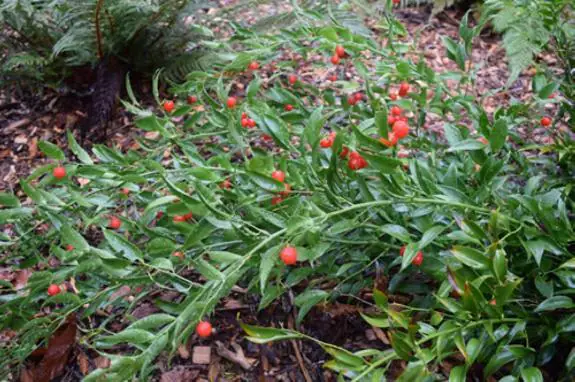Danae racemosa
This shrub is perfect for clipping into a hedge and was once a favourite edging plant during the Italian Renaissance
Denise Bush
Lunes, 19 de noviembre 2018, 10:00
Danae racemosa is a member of the Asparagaceae family and native to Asia Minor and Iran. It is a slow growing, dense, evergreen shrub with pretty terminal racemes of greenish-white flowers in the summer followed by orange-red berries all winter.
Planting bulbs for spring
-
Gardening hints
-
Now is a good time to start planting spring flowering bulbs if you haven't done so already. Tulips, hyacinths, Narcissus (daffodils) and crocus can all go in now. Planting bulbs is quite simple, choose a good location, most prefer full sun but remember that a place that looks a bit shady now may be bright and sunny in spring and vice-versa. Make sure soil is free-draining to prevent rotting and dig in some sand if necessary. Generally speaking bulbs need to be planted at a depth equivalent to three times their diameter. And last but not least, plant with the pointy side up... (if it's not immediately obvious, plant on its side rather than risk putting them in upside-down).
Common names include Alexandria laurel and poet's laurel. It was a popular plant with both the Ancient Greeks and the Romans who used it to fashion wreaths to bestow on revered members of society.
In Greek mythology Danae was the daughter of King Acrisius who, on hearing that the Oracle of Delphi foresaw him dying by the hand of his grandson, locked her in a bronze lined room with only a small window. Zeus fell in love with her and visited her in the cell in the form of golden rain through the tiny window. Zeus then helped her and their son Perseus to escape. Years later Perseus was competing in some games at which his grandfather was attending. He threw the discus but it veered off and hit Acrisius on the head, killing him instantly.
When established, Danae racemosa will form a shrub about one metre high by one metre wide. The new stems grow from the base in spring and it is important that the plant gets sufficient water during this time. By about May no more new growth appears and the long arching stems start to dip to the ground.
The glossy leaves are not leaves at all but phylloclades (flattened green stems) which store water in dry conditions. Danae racemosa is drought resistant and will withstand short periods of frost but does not like full sun or exposed positions. The ideal situation for this plant is in partial or full shade, in a light, well-drained soil.
The foliage, flowers and berries are much appreciated by flower arrangers as they last a long time in displays. The berries, which form in autumn, will often remain on the plant until January unless they are eaten by the birds.
Propagation is most commonly carried out by seed although germination can take over a year.
